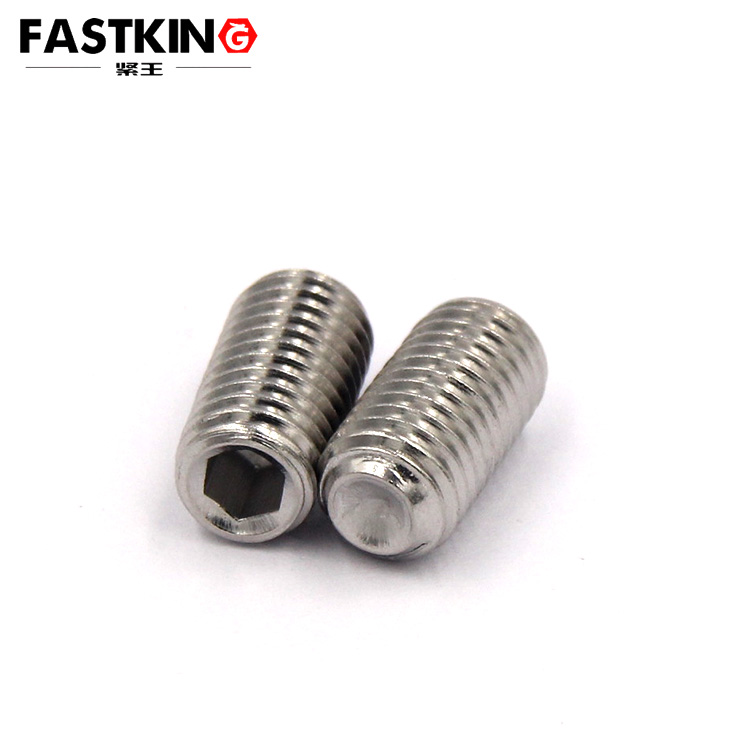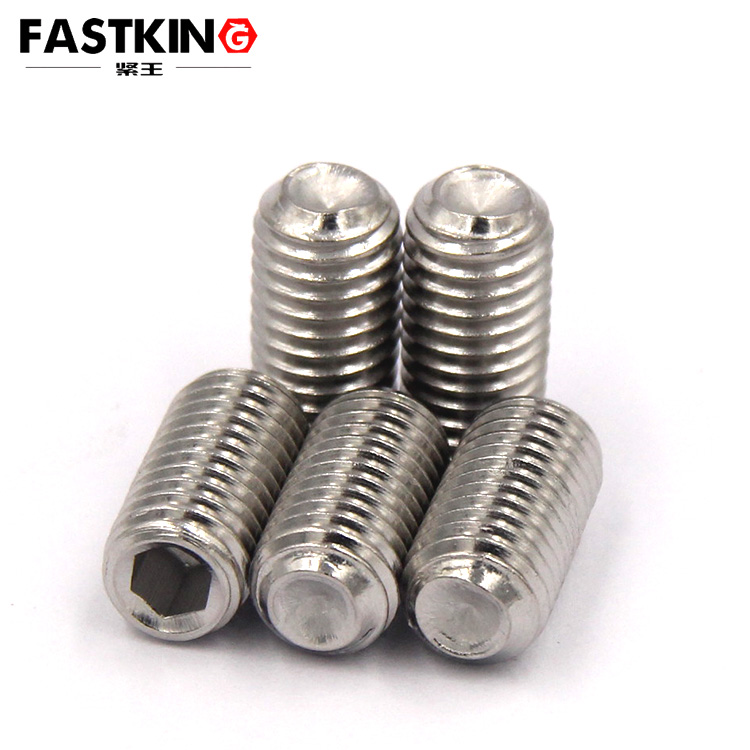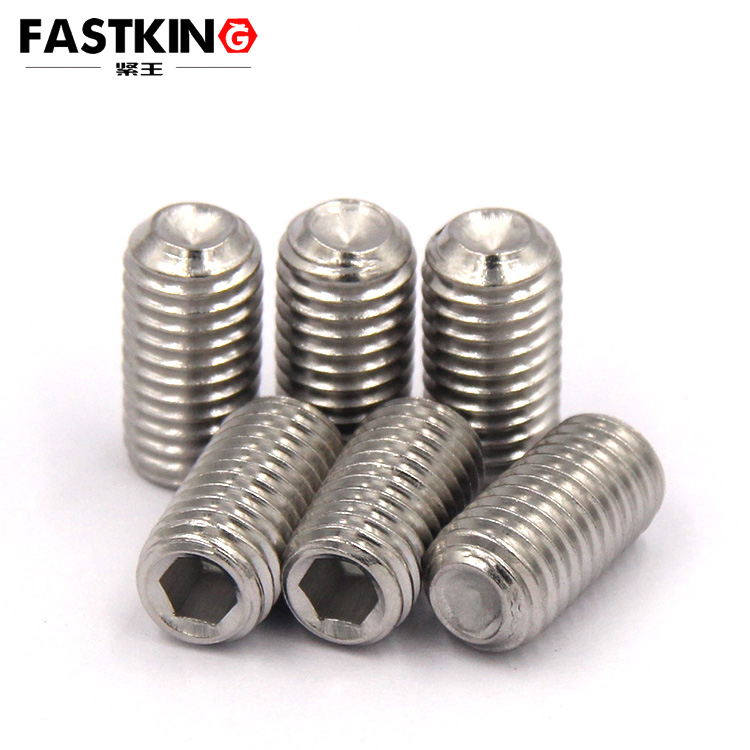Introduction
Countersunk set screws are specialized fasteners with a concave end design, typically used in applications requiring high-strength fastening and anti-loosening capabilities. By providing a larger contact area and stronger clamping force through their concave ends, these screws are highly favored across various industries, including machinery, automotive, and aerospace.

Core Advantages of Countersunk Set Screws
The concave end of countersunk set screws allows for a larger contact area with the surface of the connected object, thereby offering higher clamping force and anti-loosening capabilities. This design is particularly suitable for parts with high hardness or applications requiring frequent adjustments of fastening positions.
In terms of mechanical properties, countersunk set screws support a maximum strength grade of 12.9, meeting the fastening requirements of most precision equipment. The concave end angles are typically 90° or 120°, allowing for optimal contact area and fixing effects depending on the application.
The screws feature an internal hex or slotted head design, making them easy to operate with standard tools. The unique concave shape effectively prevents slippage, enhancing positioning accuracy. Standardized thread specifications and dimensions ensure good interchangeability and compatibility.

Proper Use of Countersunk Set Screws
When installing countersunk set screws, ensure that the threaded holes are clean and undamaged. Use appropriate tools for installation, avoiding excessive pre-tightening force. Pay attention to the screw orientation to ensure accurate contact of the concave end with the fixed component. During tightening, follow the specified torque values to prevent over-tightening, which could deform the parts.
For routine maintenance, regularly inspect the screw's fastening status and retighten if necessary. Check the concave end and threads for any damage, and replace the screw promptly if any issues are found. When storing, keep the screws in a dry, ventilated area, avoiding direct sunlight and chemical corrosion.
Common issues include wear of the concave end and thread damage. These can be identified by visual inspection and checking the fastening status. Damaged screws should be replaced promptly to avoid compromising equipment precision.
Typical Applications of Countersunk Set Screws

In the field of precision machinery, countersunk set screws are widely used for positioning and fixing components such as machine tool spindles, drive shafts, and rotating parts. Their precise positioning capabilities ensure the operational accuracy of equipment. In instrumentation, they are commonly used to secure precision components in optical instruments, measuring devices, and analytical equipment, meeting high-precision positioning requirements.
In automated equipment systems, countersunk set screws are used to fix critical components such as robot joints, servo motor shafts, and linear guides. Their reliable positioning capabilities ensure accurate operation. In the mold manufacturing industry, they are applied to secure mold inserts, ejector plates, and guide pins, providing reliable precision for mold accuracy.
Conclusion
Countersunk set screws have become an indispensable fastener in modern industry due to their outstanding performance and broad applicability. Whether in machinery, automotive, or aerospace applications, countersunk set screws will continue to play a crucial role in emerging fields such as smart manufacturing and precision machining, providing a solid guarantee for precise positioning of equipment.
